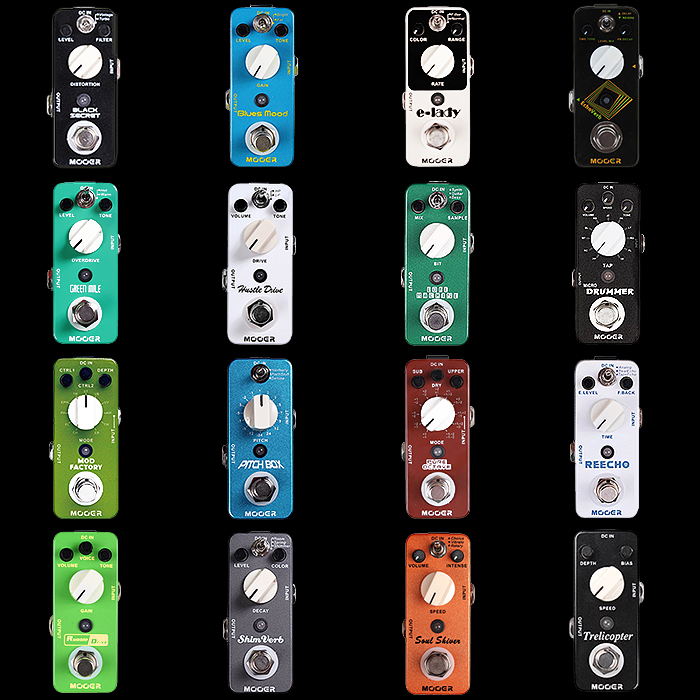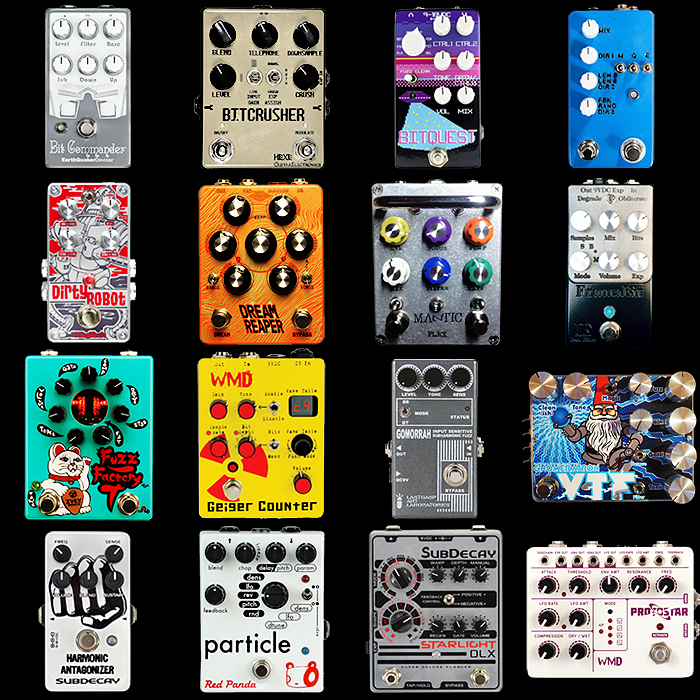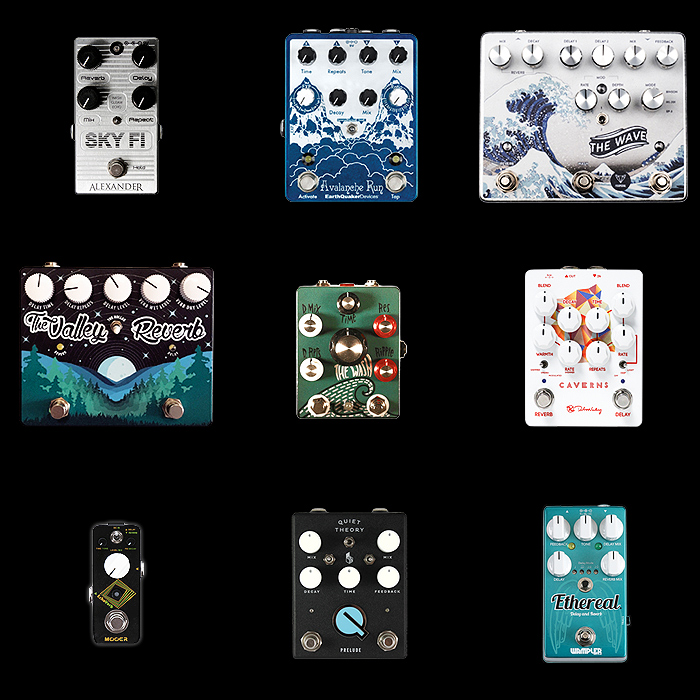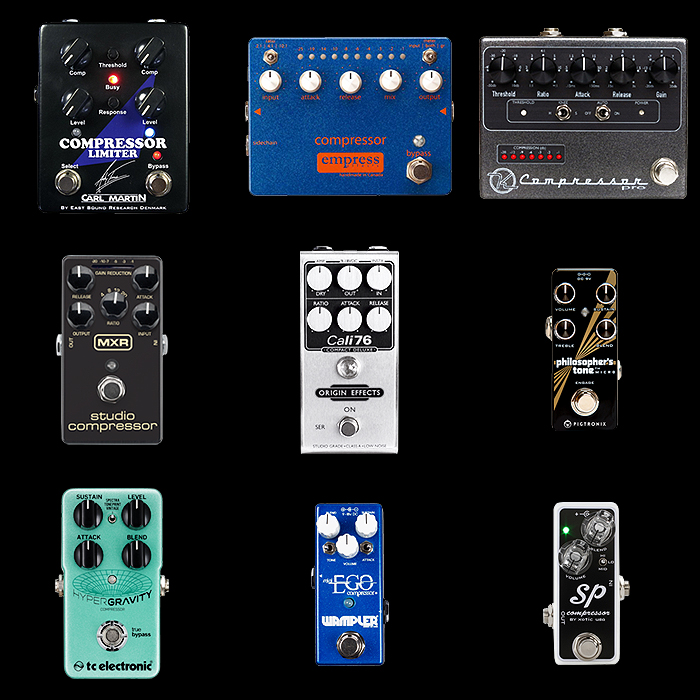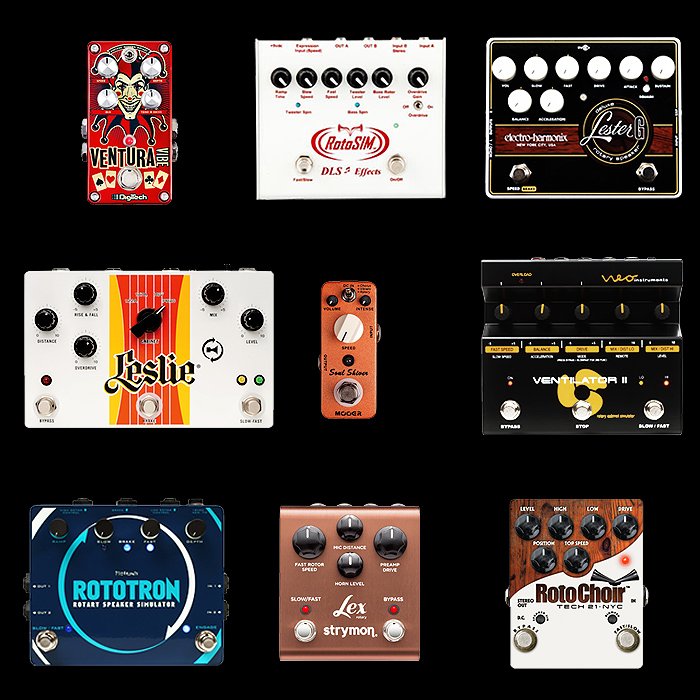12 of the Best Analogue Delay Pedals for Your Consideration
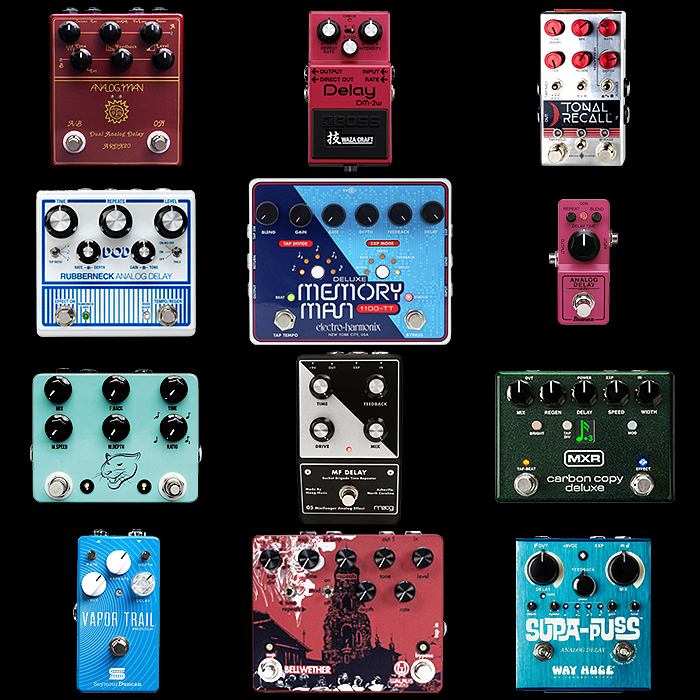
Note : updated 2018 version [here]
There’s a lot of players out there who are big fans of ’analogue’ delays (analog in USA). These were originally developed back in 1969 using a new type of Capacitor known as a Bucket-Brigade Device (BBD). Each BBD capacitor can store approximately 200 to 300 milliseconds of signal - and most of these Analogue Delays use a pair of BBDs for a maximum of around 600ms of delay. Deluxe versions of analogue delays typically use 4 or more - as in the case with the EHX Deluxe Memory Man and the Chase Bliss Tonal Recall RKM - which extends max time to 1100ms in those cases. Some of the more rarefied versions of these chips can retail for $50/60 a piece which explains the jump in price of the new Tonal Recall by exactly $100.
What actually colours the analogue delay sound and creates that dark slightly gritty tone is not really the BBD itself, rather it is a combination of the clock chip which is needed to control and stitch/chain the BBDs together, and then the suppression/filter chip which is used to mute/mask the click noise the clock chip makes. So depending on your combination of components here you can get quite individual and distinct tones of analogue delays, and your price and quality of components can vary enormously - with older / vintage chips being very much in demand and typically very highly priced.
Analog.Man ARDX20 Dual Analog Delay - from $265
Dan Steinhardt of That Pedal Show fame really loves these dual channel delays. You have a range from 36ms (slapback) to 600ms per channel and can alternate each for typically rhythm and lead tones. There's no tap-tempo here (although you can use external device as featured in above video), so the 2 x 3 dials are Time | Feedback | Level. These pedals are intended to be simple and elegant - kind of set and forget really, and are the diametric opposite to the Chase Bliss Tonal Recall below which comes with all the bells and whistles. This one is not necessarily for me, but I can see why others like it.
Boss DM-2W Waza Craft - £149
The original one of these was first launched in 1981, and lasted a good couple of decades before tastes switched to digital. And then owing to a clamour of popular demand, Boss re-released this in 2014 as a Waza Craft Edition. The number and configuration of dials is identical, but there is an additional toggle selector (Standard | Custom) which takes delay time from circa 300ms to 800ms which would seem to indicate the use of at least 3 BBD chips! This now competes with the MXR Carbon Copy as probably the most popular of the compact Analogue Delays.
Chase Bliss Audio Tonal Recall RKM - £499
I've already written a few hundred words of praise for Joel Korte and his range of Chase Bliss Audio pedals. Joel has truly innovated the compact / regular-sized enclosure and no one else manages to squeeze in as great an high-fidelity feature set as Joel. His pedals typically feature dual footswitches, 6 dials, 4 toggle switches and 16 dip-switches - which gives you the most amazing degree of tonal sculpting. The Tonal Recall delay pedal foregoes the usual ModuShape panel for more delay-pertinent settings, but still retains the classic 3-modulation-wave selector. The Chase Bliss pedals look like total overkill when you see them and are certainly within option paralysis territory, but most people - once they get a hang of one end up acquiring near enough all 6 pedals on offer. I currently have 4, most definitely will get the Warped Vinyl Chorus/Vibrato, but however much I like the look of the Tonal Recall, I am not sure how or where I would accommodate it within my pedal chain. It's probably the best of the analogue delay pedals available, but cannot really compete with the very best of Digital Delay Workstations - like the Empress EchoSystem for instance. Gorgeous pedal nonetheless in every way, and the most desirable of all of these. As mentioned in the intro the RKM Red Knob Mod version of the Tonal Recall doubles up the BBD chips to give you 1100ms of delay vs the original - there are also a number of minor enhancements / refinements, but the chief differentiator between the original and RKM pedals is the additional BBD chips.
DOD Rubberneck - £209
This is a sometimes overlooked, but really impressive analogue pedal with tap-tempo, sub-divisions and a quite mighty (for analogue) 1.5s of delay or 1500ms. It features dual footswitches and no less than 7 dial controls (2 of them are dual-concentric) - and finally a Wet/Dry/Tails toggle. This one covers a lot of territory and is reasonably priced for all those features. Note that the LEDs also double up as Rubberneck Rate and Regen Adjust controls too.
Electro-Harmonix Deluxe Memory Man 1100-TT - £329
This is probably THE classic analogue delay pedal in its various guises, and has been going strong in its various iterations since 1976. Its combination of components gives it a very particular tone which is instantly recognisable. My Empress EchoSystem has a Memory Man mode which captures that core tone really well - it's really quite distinct. The Deluxe version gives you 1100ms of delay, alongside 6 control dials, tap-tempo with 5 divisions and 5 different expression pedal modes. The one thing that lets it down really is its size. Connoisseurs also recommend the earlier models over the more recent ones, citing a slight change in the core tone owing to a change in component use. This is every the case with vintage pedals - some use now banned, limited or controlled substances which cannot be found in the modern equivalent. There is almost always a trade-off between tone, price and reliability - these delays are legendary for a reason though.
Ibanez Mini Analog - £91
This is easily the most affordable and accommodating analogue delay listed here. Obviously its diminutive design means that it cannot carry too much in the way of features. It has 3 dials - Repeat | Blend | Delay Time, and manages to cram in a couple of BBD chips for a max delay of 600ms - which considering its size is exceptional. This is actually a really high quality analogue delay pedal despite its mini size - consider this the Walkman of analogue delays!
JHS Pedals Panther Cub - £329
The pricing here is somewhat justified by the fact that this pedal uses no less than 8 BBD chips for 1000ms of delay. You get 6 dials - Mix | Feedback | Time | Modulation Speed | Modulation Depth | Ratio and dual footswitches - including tap tempo. In many ways it's really quite similar to the above DOD Rubberneck although there is a significant price premium here.
Moog Minifooger Analog Delay - £199
This is actually slightly larger than pictured - Moog do make some really decent guitar pedals, but for my taste the enclosures need modernising and compacting somewhat. This looks very much like and older 70's style pedal while at the same time Boss was starting to introduce its sleeker compact line. This pedal features 4 dials - Time | Feedback | Drive | Mix - the key differentiator here being the Drive control which properly ads some grit to the delays, and is one of the main reason so many like this. It sounds glorious either way, and its 4 BBD chips get you from 35ms to 700ms or thereabouts.
MXR Carbon Copy Deluxe - £229
I would hazard an educated guess that the standard MXR Carbon Copy is likely the world's best selling analogue delay. In that version it is compact and affordable and provides that essential darker tone of delays that analogue aficionados go for - as well as having a button to trigger a slight flavour of modulation. For those that considered the standard Carbon a little to dark there is also a bright version of that compact pedal. The forthcoming Deluxe model combines the two existing pedals into one enclosure, adds Modulation Speed and Width and gives you an additional tap-tempo footswitch and divisions - with delay time doubled to 1200ms. I would have preferred MXR to go a more Chase Bliss or Foxpedal route on this one to keep it within the compact format - but this gives you a really decent feature set for the price - and kind of takes it head-to-head with the DOD Rubberneck above.
Seymour Duncan Vapor Trail - £169
Although obviously much better known for their pickups, Seymour Duncan have made a really decent run of pedals of late - including this fantastic compact analogue delay. This is most probably the best value analogue compact at the moment - giving you mini Modulation Rate and Depth pots as well as the core - Mix | Repeats | Delay dials. You also get a pretty standard 15ms to 600ms of delay.
Walrus Audio Bellwether - £295
I've mentioned before that Walrus seems to be very adept at these larger sized full-featured pedals - taking on a format and hooking it up with the maximum bells and whistles. In this category and when you come up against Chase Bliss, it is tricky to try to out-muscle Joel Korte on the feature-side so you max up in other areas. The key differentiators here are the FX Loop and smart Expression pedal options. Otherwise and stats-wise you have a max 1000ms of delay, tap-tempo with divisions and switchable modulation controlled by Rate and Depth.
Way Huge Supa-Puss - £225
Following on from the Walrus, it's quite cool to be able to compare a very similar feature-set in a much reduced size format, and at a better price point too. The Supa-Puss gives you 900ms of total delay, it has 3 large dials - Delay | Feedback | Mix and 4 small ones - Depth | Speed | Gain | Time, alongside tap-tempo and 5 different divisions. It does not have the Bellwether's FX Loop or smart expression controls, but otherwise matches it and adds gain for some extra grit.
Addition! - Sinvertek Fluid Time MKII - £179
Ironically this it the pedal I first had in mind when I started this series of articles about individual delays and reverbs. Through the process it somehow slipped me mind! This is a really clever Chinese-made analogue delay pedal with digital controls - in a not dissimilar way to the Chase Bliss pedals. This pedal has tap tempo with sub-divisions and all manner of clever secondary functions including 3 smart modes for the second Tap / Func footswitch. For everything it does in the compact form factor its pretty unique. Will be interesting to see how it stacks up against the new Foxpedal Novaplex when that finally gets released.
Addition! - JAM Delay Llama Supreme - £319
I caught this recently on That Pedal Show - this is quite a big box for only 600ms of delay, but its secret sauce is the 'Q' dial which adds an envelope filter into the mix for even spacier modulation. As it is you have tap-tempo with divisions, Time | Level | Tone | Repeats - dials for Modulation Depth and Speed and a toggle switch and dial for the Q filter. There are also 3 footswitches here - the usual On and Tap, as well as a separate FX one to control the Modulation. JAM pedals are properly boutique, hand-made, hand-painted and wooden-boxed - all in Athens, Greece. I don't have a major issue with the price, although it is a little steep for just 600ms of delay, my biggest issue is the size of the pedal, but then it kind of needs to be this size to accommodate the 3 footswitches. Some clever control-side programming could alleviate this - for instance a 2 second momentary function on the on/off switch, but it is understandable that JAM wanted to keep the pedal 100% analogue.
Final Thoughts
I can't say I'm the world's biggest fan of analogue delay - I find my Empress EchoSystem covers that pretty well enough. I am though as ever intrigued and lust for the Chase Bliss Audio Tonal Recall RKM even though I'm not sure how I would necessarily accommodate it. Same goes for the Ibanez Mini - which is an incredibly feat of engineering here and sounds absolutely amazing. All the pedals on this page come highly recommended and have their own following. Each has something to recommend it.

































